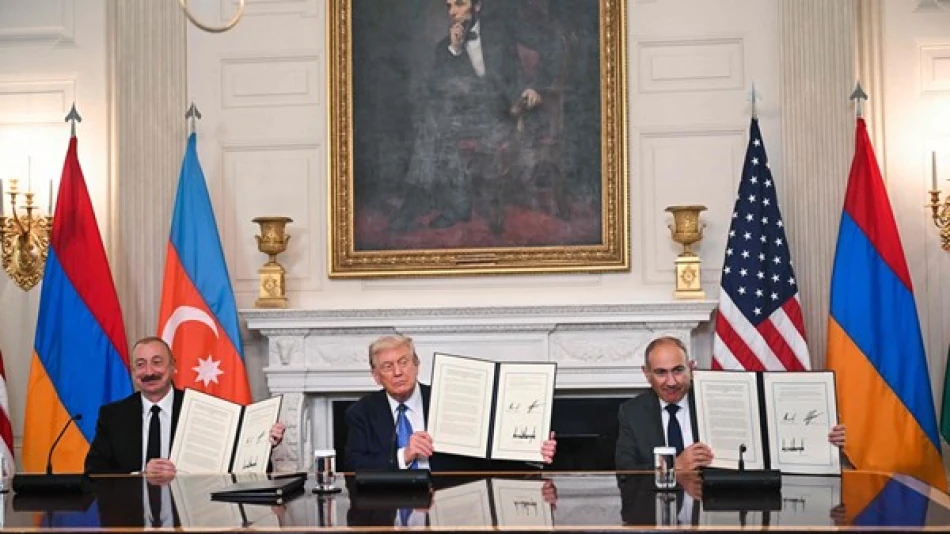
Azerbaijan and Armenia Unveil Historic Peace Accord, Paving Way for Regional Stability.
Azerbaijan and Armenia Sign Historic Peace Deal, Ending Three Decades of Conflict
Azerbaijan and Armenia have publicly released the full text of their groundbreaking 17-article peace agreement, signed at the White House under U.S. mediation. The deal represents a potential end to one of the world's longest-running territorial disputes, with both nations committing to recognize each other's sovereignty and territorial integrity within existing borders. However, the agreement still requires parliamentary ratification in both Baku and Yerevan before taking effect.
Key Provisions of the Agreement
The comprehensive peace treaty addresses the core issues that have fueled decades of animosity between the two South Caucasus neighbors. Both countries pledge to permanently cease hostilities and establish diplomatic relations based on mutual respect for sovereignty and territorial integrity.
Beyond the security commitments, the agreement opens pathways for economic cooperation and normalizes travel between the nations. This represents a dramatic shift from the isolation and military tensions that have characterized Armenian-Azerbaijani relations since the Soviet collapse.
Strategic Context: Why This Deal Matters Now
Shifting Regional Balance
The timing of this agreement reflects Azerbaijan's strengthened position following its 2023 military campaign that restored control over the mountainous Nagorno-Karabakh region. This decisive action effectively ended Armenian control over territories that had been disputed since the early 1990s, creating new realities on the ground that likely facilitated diplomatic progress.
The deal also represents a significant diplomatic victory for U.S. influence in the South Caucasus, a region where Russia has traditionally held sway. By successfully mediating this agreement, Washington demonstrates its continued relevance in post-Soviet conflicts despite broader geopolitical tensions.
Economic and Energy Implications
For international energy markets, the peace agreement could unlock new opportunities in the energy-rich Caspian region. Azerbaijan, a major oil and gas producer, may find it easier to develop alternative export routes and infrastructure projects that previously faced security risks due to the ongoing conflict.
The normalization of relations also positions both countries to benefit from regional connectivity projects, including transport corridors linking Asia and Europe. Armenia, in particular, could gain access to new trade routes that bypass its traditionally difficult relationship with Turkey.
Challenges Ahead
Parliamentary Ratification
The agreement's success hinges on ratification by both parliaments, where domestic political pressures could complicate approval. In Armenia especially, public opinion remains divided on territorial concessions, while Azerbaijan's government faces expectations to deliver on promises of regional development and refugee return.
Historical precedent suggests that peace agreements in the South Caucasus face implementation challenges. The region's complex ethnic and political dynamics, combined with external influences from regional powers, create ongoing risks for sustained peace.
Broader Regional Impact
This peace deal could serve as a model for resolving other "frozen conflicts" across the former Soviet space. Success in Armenian-Azerbaijani normalization might encourage diplomatic solutions to disputes in Georgia, Moldova, and other regions where territorial conflicts have persisted for decades.
The agreement also reflects changing dynamics in the South Caucasus, where traditional Russian influence faces competition from Turkey, the United States, and European Union. This multipolar competition may actually benefit regional stability by providing alternative frameworks for conflict resolution.
If successfully implemented, the peace treaty could transform the South Caucasus from a region defined by conflict into one characterized by economic cooperation and strategic connectivity between Europe and Asia.
Most Viewed News

 Layla Al Mansoori
Layla Al Mansoori






